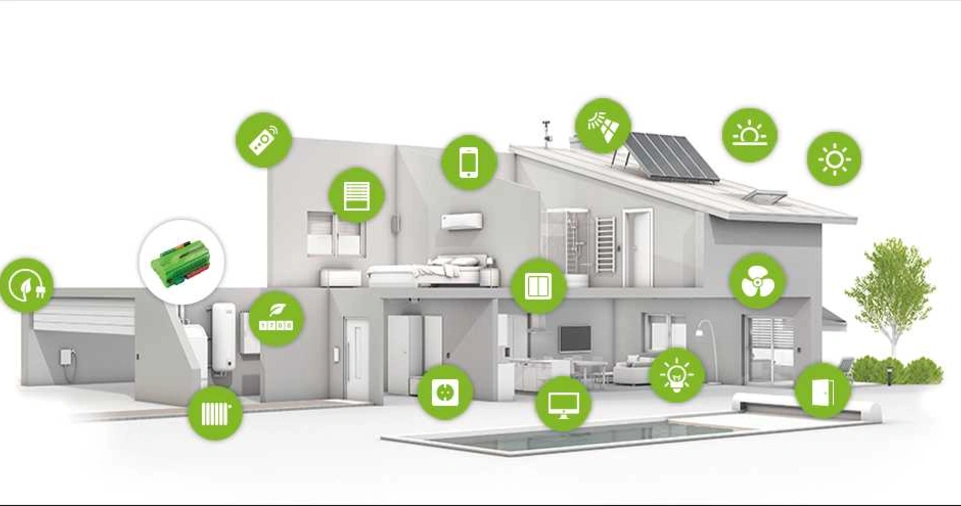A smart home system is designed to enhance convenience, security, and efficiency through the integration of various smart devices.
With the rapid advancements in smart technology, setting up a smart home has become easier than ever.
Whether you’re a beginner or an advanced user, this guide will walk you through the process of setting up a smart home system step by step.
By the end of this guide, you will have a well-structured, efficient, and fully functional smart home tailored to your needs.
Step 1: Determine Your Smart Home Goals
Before purchasing smart home devices, define your primary goals. Are you looking for improved security, better energy efficiency, or enhanced convenience?
The answer to these questions will help you choose the right devices and prioritize your smart home setup.
Common Smart Home Goals and Recommended Devices
| Goal | Recommended Devices | Additional Features |
|---|---|---|
| Home Security | Smart locks, video doorbells, security cameras, motion sensors | Remote monitoring, real-time alerts, AI-driven facial recognition |
| Energy Efficiency | Smart thermostats, smart lights, smart plugs | Automated scheduling, energy usage reports, integration with renewable energy sources |
| Entertainment | Smart TVs, smart speakers, streaming devices | Multi-room audio, voice-controlled browsing, immersive surround sound |
| Convenience | Smart assistants, smart kitchen appliances, voice-controlled devices | Customizable routines, remote access via mobile apps |
ALSO READ: How to Mix and Match Patterns Like a Pro?
Step 2: Choose a Smart Home Ecosystem
Smart home devices work best when integrated into a unified ecosystem. The three most popular ecosystems include:
- Amazon Alexa – Compatible with a wide range of devices and works with voice commands.
- Google Home – Integrates well with Google services and supports multiple users.
- Apple HomeKit – Best for Apple users who prefer a privacy-focused ecosystem.
Comparison of Smart Home Ecosystems
| Feature | Amazon Alexa | Google Home | Apple HomeKit |
|---|---|---|---|
| Compatibility | High | High | Moderate |
| Privacy | Moderate | Moderate | High |
| Voice Assistant | Alexa | Google Assistant | Siri |
| Smart Home Integration | Extensive | Extensive | Limited |
| Multi-User Support | Yes | Yes | Limited |
| Device Availability | Widely available | Widely available | Limited to Apple-approved devices |
Step 3: Set Up a Smart Home Hub (Optional)
A smart home hub acts as a central controller for multiple devices. Some ecosystems have built-in hubs, while others may require an additional device like:
- Amazon Echo (for Alexa users)
- Google Nest Hub (for Google Home users)
- Apple HomePod (for HomeKit users)
- Samsung SmartThings (for multi-platform integration)
Benefits of a Smart Home Hub
- Centralized control over multiple devices
- Improved automation and interoperability
- Enhanced security with encrypted communication
- Reduces dependency on multiple apps
Step 4: Select and Install Smart Devices
Smart Lighting
Smart bulbs, LED strips, and smart switches allow you to control lighting remotely, set schedules, and change colors. Some advanced models include motion detection and ambient light sensors.
Smart Thermostats
A smart thermostat, such as Nest or Ecobee, helps regulate home temperature, leading to energy savings. Some models also offer weather-based automation and occupancy detection.
Smart Security Devices
- Smart Locks – Provide keyless entry and remote access.
- Video Doorbells – Allow you to see and talk to visitors.
- Security Cameras – Offer 24/7 surveillance with cloud storage and AI-enhanced threat detection.
Smart Plugs and Outlets
These let you control traditional appliances remotely via your smartphone, helping to reduce energy waste by scheduling power usage.
Smart Kitchen Appliances
Devices like smart coffee makers, refrigerators, ovens, and dishwashers can be programmed to operate automatically, saving time and energy.
Smart Irrigation Systems
Automated wagering systems adjust schedules based on weather forecasts, preventing overwatering and reducing water waste.
ALSO READ: How to Pick the Right Materials for Your Home’s Facade?
Step 5: Connect and Configure Devices
After purchasing devices, follow these steps to connect them to your smart home network:
- Download the Manufacturer’s App – Smartest devices require their respective apps for initial setup.
- Connect to Wi-Fi – Ensure your home has a stable internet connection.
- Enable Voice Assistant Integration – Link devices to Alexa, Google Assistant, or Siri.
- Set Up Automation and Routines – Automate tasks such as turning off lights when leaving home.
- Test the System – Ensure all devices function as expected and adjust settings as needed.
Step 6: Enhance Security and Privacy
Best Practices for Smart Home Security
| Security Measure | Description |
|---|---|
| Use Strong Passwords | Set unique passwords for each smart device. |
| Enable Two-Factor Authentication | Adds an extra layer of security. |
| Regular Software Updates | Keep devices updated to prevent vulnerabilities. |
| Create Separate Wi-Fi Networks | Use a guest network for smart devices. |
| Review Privacy Settings | Adjust data-sharing permissions. |
| Invest in Encrypted Devices | Ensures data is protected from cyber threats. |
Step 7: Expand Your Smart Home System Over Time
A smart home system can always be expanded with new devices. Consider integrating advanced automation, such as:
- Smart Blinds – Automate opening and closing based on time or sunlight.
- Smart Home Sensors – Motion, temperature, and leak sensors add another layer of automation and security.
- Smart Garage Doors – Allow remote access and automated closing features.
- Smart Home Energy Management – Track energy consumption and optimize usage through AI-driven insights.
- Home Theater Setup – Connect soundbars, projectors, and smart TVs for an immersive experience.
Advanced Smart Home Automation Ideas
- Geofencing – Automatically adjusts home settings based on your location.
- AI-Based Automation – Machine learning algorithms predict and automate device usage based on habits.
- Voice-Activated Scenes – Combine multiple smart devices into single commands, such as “Goodnight” to turn off lights and lock doors.
- Remote Health Monitoring – Smart sensors can track health vitals and send alerts to caregivers if needed.
ALSO READ: How to Keep Pests Away from Your Garden Naturally?
Conclusion
Setting up a smart home is a straightforward process that offers convenience, energy savings, and security.
By following the steps outlined in this guide, you can create a smart home that fits your needs and lifestyle.
Start small with essential devices and expand over time for a fully automated home. With continuous advancements in smart technology, the possibilities for home automation are endless, ensuring a more comfortable and efficient living environment.






